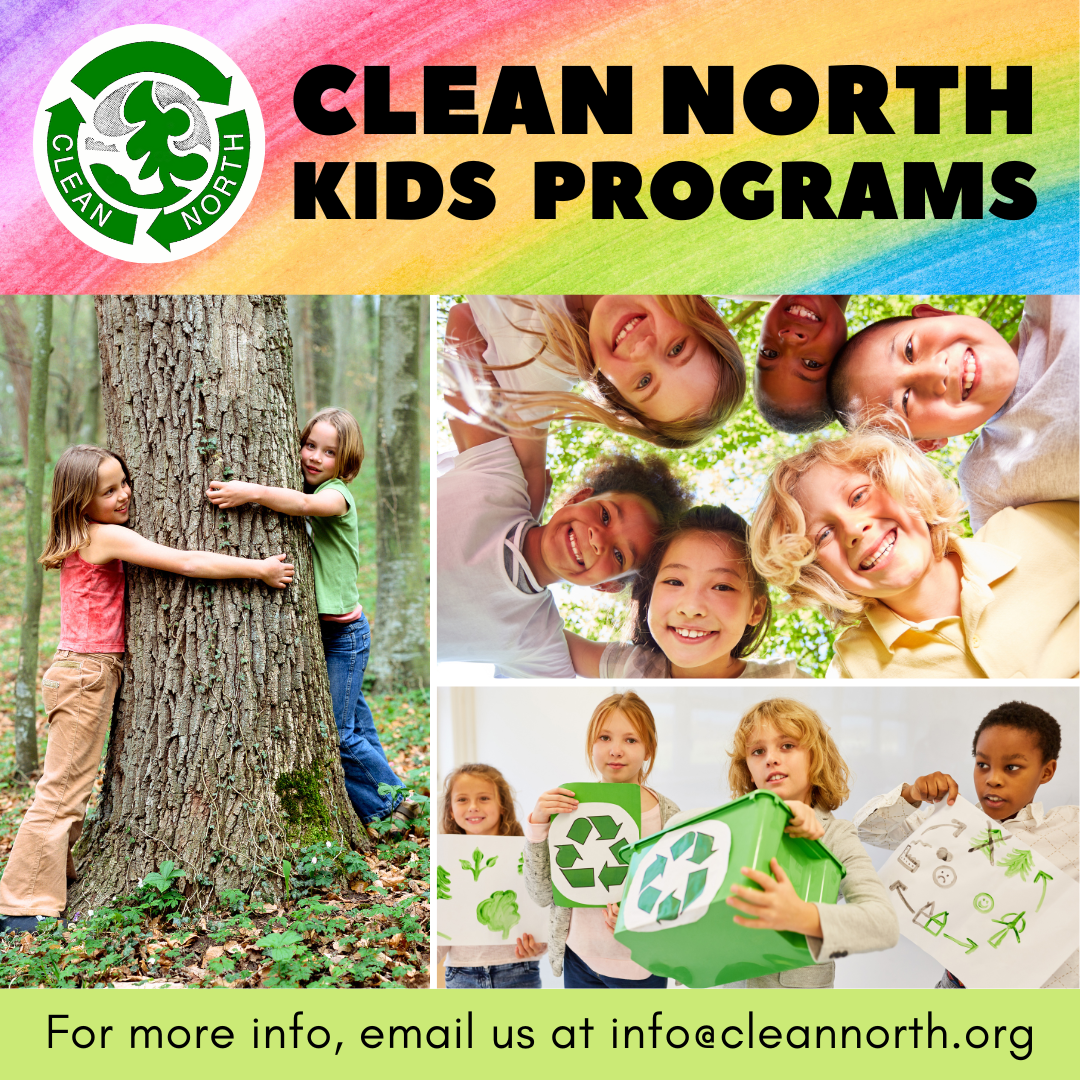
We offer hands-on educational activities for children, adapted to a range of age groups. Our goal? To inspire and encourage the next generation of green stewards. To book a program/get more information, email info@cleannorth.org. Program availability may vary depending on availability of our volunteers.
Worm composting
Introduces children to soil composition, ecosystems, life cycles, plant growth, waste reduction, landfill emissions, and climate change impacts. They will be able to view and touch the earthworms. Grades K-8; indoor/outdoor.
Papermaking
Teaches children how to reuse office paper by making it into new products. While recycling is the last of the 5 Rs (after Refuse, Reduce, Reuse, Repurpose), this activity promotes eco-awareness and sustainable choices. Grades K-8; indoor/outdoor (but requires electricity). FYI this activity is fun but messy.
Reuse, Recycle, or Toss?
Leads children through sorting a bag of waste (clean single-use items) to determine if the items could be used again. Then a game is played where children identify items we can replace with a reusable alternative. The goal is to deplete the waste items in 10 rounds. Grades 1–5. Indoor/outdoors.
Are Plastics Fantastic for Wildlife?
Takes children through an activity designed to drive home how plastics can harm wild animals, birds, and fish—and how we can reduce the risk of such harm, including by reducing use of single- and short-term use plastics like plastic straws, bags, and toothbrushes. Grades 1-5. Large indoor/outdoor space.
Understanding the Forest Web
This activity illustrates how living things depend on each other and lets children explore ways to live more harmoniously with nature. They will form a connected forest community using ropes, and experience how the loss of one key element—a mature tree—tugs on all. The session ends with a discussion on reducing such impacts. Grades 3–6. Large indoor/outdoor space.
Habitat Game
This game shows how our choices impact wild habitats and encourages children to brainstorm ways to live in harmony with nature. Participants, representing animals, choose habitats on a canvas, but as development spreads, animals lose space and may go extinct. The game ends with only a few animals surviving in a small reserve, followed by a discussion on change. Grades 3–6. Large indoor/outdoor space.
Caring for Urban Trees Game
Teaches children why urban trees matter, how loss of urban tree cover is harmful, and how human actions can help or hurt urban trees. Grades 3–6. Large indoor space.
Ecosystem Survival Game
A fast-paced game that lets children be a part of an ecosystem (includes roles for people with diverse mobility). Participants become animals, a force of nature, or a human activity. Animals must visit food, water and mating stations while avoiding those who are a danger to them. Grades 4–8. Outdoors, ideally in a forested area or one with some hiding places.
The Whole Picture
Linking Choices to Consequences: Spurs children to think about the ecological impacts of our choices. They pair up and get a card showing a familiar item, then walk around looking for a match (reusable cloth bag and recycled plastic bag, etc.). They discuss which item is more “green,” considering manufacturing, use, and disposal. Once a decision is made, they connect with another pair and debate their choices. This continues until the group comes to a consensus. Grades 7- 8. Indoor/outdoor.
Want to know more?
Email us at info@cleannorth.org.
